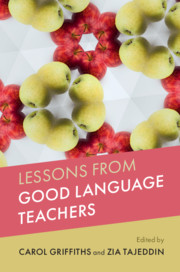Book contents
- Lessons from Good Language Teachers
- Lessons from Good Language Teachers
- Copyright page
- Contents
- Figures
- Tables
- Contributors
- Foreword
- Preface An Overview of Good Language Teachers
- Part I Macro Perspectives
- Part II Classroom Perspectives
- Part III Instructional Perspectives
- 15 Pragmatics and Good Language Teachers
- 16 Vocabulary and Good Language Teachers
- 17 Grammar and Good Language Teachers
- 18 Pronunciation and Good Language Teachers
- 19 Listening and Good Language Teachers
- 20 Speaking and Good Language Teachers
- 21 Reading and Good Language Teachers
- 22 Writing and Good Language Teachers
- Good Language Teachers: Past, Present, and Future Directions
- Epilogue Good Language Teachers – What Do They Do? What Do They Know?
- Index
- References
19 - Listening and Good Language Teachers
from Part III - Instructional Perspectives
Published online by Cambridge University Press: 22 April 2020
- Lessons from Good Language Teachers
- Lessons from Good Language Teachers
- Copyright page
- Contents
- Figures
- Tables
- Contributors
- Foreword
- Preface An Overview of Good Language Teachers
- Part I Macro Perspectives
- Part II Classroom Perspectives
- Part III Instructional Perspectives
- 15 Pragmatics and Good Language Teachers
- 16 Vocabulary and Good Language Teachers
- 17 Grammar and Good Language Teachers
- 18 Pronunciation and Good Language Teachers
- 19 Listening and Good Language Teachers
- 20 Speaking and Good Language Teachers
- 21 Reading and Good Language Teachers
- 22 Writing and Good Language Teachers
- Good Language Teachers: Past, Present, and Future Directions
- Epilogue Good Language Teachers – What Do They Do? What Do They Know?
- Index
- References
Summary
In Chapter 19, the authors deal with the practices of good teachers of listening. They describe an interventionist study aimed at developing teachers’ understanding of listening pedagogy and practice and present the implications of the study for models of teacher development.
- Type
- Chapter
- Information
- Lessons from Good Language Teachers , pp. 246 - 259Publisher: Cambridge University PressPrint publication year: 2020
References
- 1
- Cited by

